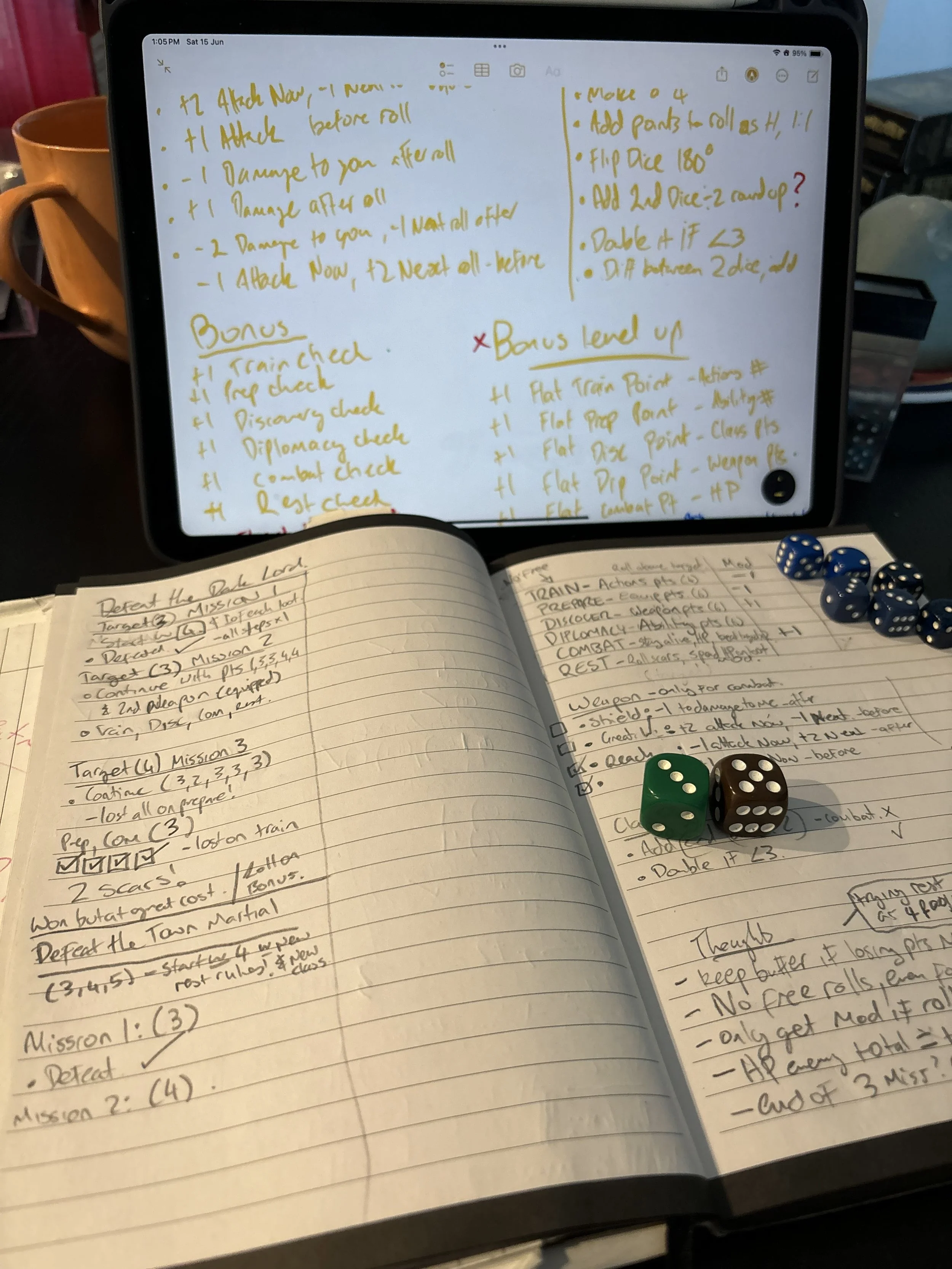Thoughts on Game Play Testing
I have been play testing a lot of games solo, and with other players over the last few weeks. This week on the blog, I talk through some top tips and best practice in organising play tests for games. I do this in the most simple and accessible way. For general design tips and iterative ideation, check out a blog post here.
Finding and Organising a Play Test
For information on where to find play testers; I recommend having access to a community around your work, through social media comments, email lists etc, you can find an audience looking to comment (I should know, as it has worked for me). I also recommend forum style communities like r/RPGDesign or TTRPG Design Community, where there are threads for job ads to play test games. Outside the internet, often gaming stores will have nights that allow people to bring in gas to play. When I was a regular game master at a store in Canberra Australia, they had design nights occasionally. They also allowed groups to be intrude to any tables you would want to run, even outside of the larger systems.
Preparation For a Play test
It is best practice to have told the group the exact state of the game prior to the play test. If you have the bare bones of something you w ant to work on, then say that up front. You would not want the group to be expecting something finished if it is not. Think about the ideas you want to work through prior to arriving. It will help focus the session. Prepare a simple adventure for running your game, if it is a tabletop roleplaying game. Keeping things simple will help the rules and play factors be the highlight of the session. Lean into appropriate genre tropes so people do not have to focus on the story, and more around the play of the game and its experience.
During the Game
Start off by describing the rules as written in the sheet. It is important to get the gist of the game across, as it currently stands, not the past memory version you have. Get the players to actually read the rules after understanding of the game, to make sure it is understood. Listen to and critically analyse the feedback of the play testers during the session, take notes! I suggest to play the game as intended in the first run through. Collect feedback at points in the game and feel free to make slight tweaks, if there is unanimous feedback that points to the same direction.
After the Game
Listen to and critically analyse the feedback of the play testers after the session, take notes! I have always prepared a couple of quick questions that start simple (did you like it or not and why), and lead to more open ones (what did you specifically like about that thing you said). Qualitative and quantitative feedback is important to consider. Feel free to narrow in on specifics during the feedback stage. At this point, you may wish to include an anonymous written form, (online), for people to take their thoughts away after the game and reflect on. This will remove any bias from you, and give you more honesty, fi that is something you want. After you have collected the feedback of the players, go back to your space and rework the design as necessary. Be honest with yourself and work through the good and the negative feedback. Adjust as necessary. Organise another session with the group to see the progress as it develops. It is also important to remember to find a variety in play testers, so that multiple experiences can be garnished.
Remember to take your time with design and have fun with it. It is easy to see this as a job, when it might not need be that. Don’t remove all elements of fun, by being really critical on yourself.
